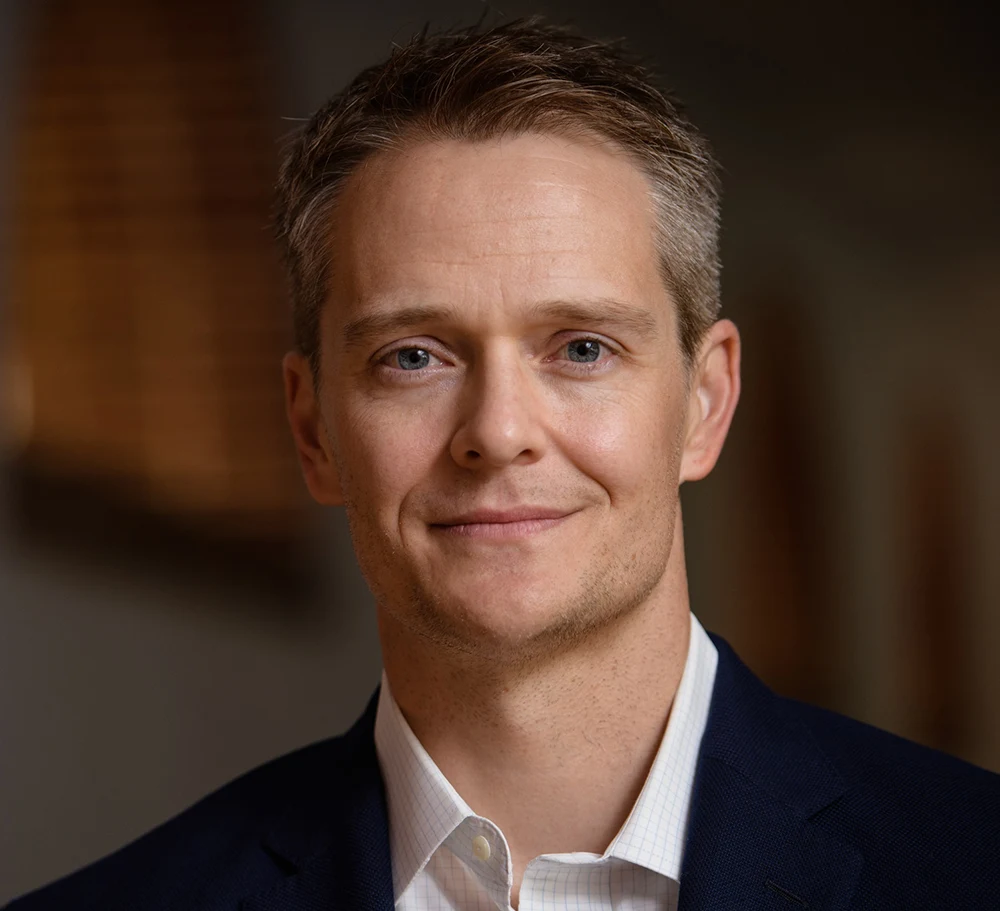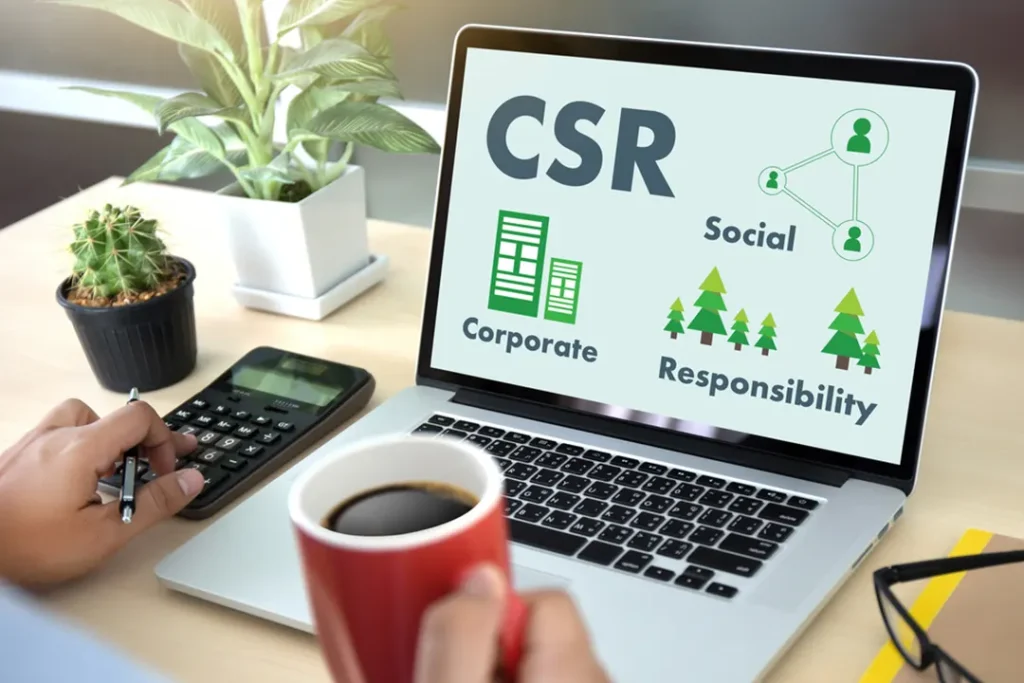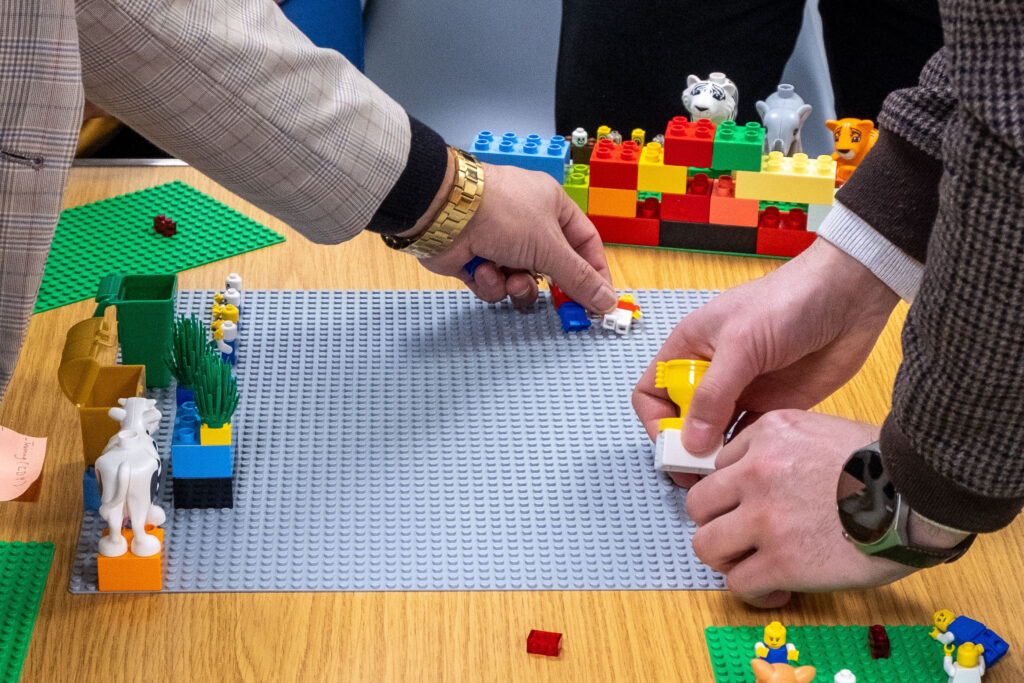By Daniel Butcher, Managing Editor
Lorem ipsum dolor sit amet, consectetur adipiscing elit, sed do eiusmod tempor incididunt ut labore et dolore magna aliqua. Orci porta non pulvinar neque laoreet suspendisse interdum consectetur libero. Proin nibh nisl condimentum id venenatis. Volutpat maecenas volutpat blandit aliquam etiam erat velit scelerisque in. Venenatis a condimentum vitae sapien pellentesque. Pulvinar etiam non quam lacus suspendisse faucibus. Donec ac odio tempor orci dapibus ultrices in iaculis nunc. Massa sed elementum tempus egestas sed sed risus. Duis convallis convallis tellus id interdum velit laoreet id. Lacus laoreet non curabitur gravida arcu ac. Lorem mollis aliquam ut porttitor leo a.
Lectus sit amet est placerat. Ullamcorper malesuada proin libero nunc consequat interdum. Adipiscing vitae proin sagittis nisl rhoncus mattis rhoncus urna. Tristique risus nec feugiat in fermentum posuere urna. Hendrerit gravida rutrum quisque non tellus orci ac auctor. Viverra mauris in aliquam sem fringilla ut morbi. Aliquet bibendum enim facilisis gravida neque convallis a. Libero nunc consequat interdum varius sit amet mattis vulputate. Id velit ut tortor pretium viverra. Tortor at risus viverra adipiscing at in.
Est placerat in egestas erat. Sit amet nisl suscipit adipiscing. Orci sagittis eu volutpat odio. Vitae nunc sed velit dignissim sodales ut eu sem. Nec feugiat in fermentum posuere urna nec tincidunt praesent semper. Maecenas pharetra convallis posuere morbi. Dui nunc mattis enim ut. Sapien eget mi proin sed. Facilisi etiam dignissim diam quis enim. Sed odio morbi quis commodo. Praesent elementum facilisis leo vel fringilla est ullamcorper. Rhoncus dolor purus non enim praesent elementum facilisis. Vulputate mi sit amet mauris commodo quis imperdiet massa tincidunt.
Morbi tincidunt ornare massa eget. Non tellus orci ac auctor. Feugiat in ante metus dictum at tempor. Ultrices gravida dictum fusce ut placerat orci nulla pellentesque. Vestibulum rhoncus est pellentesque elit ullamcorper dignissim cras tincidunt lobortis. Enim nulla aliquet porttitor lacus luctus. Viverra tellus in hac habitasse. Sapien et ligula ullamcorper malesuada proin libero nunc consequat interdum. Rhoncus mattis rhoncus urna neque viverra justo. Lacus vestibulum sed arcu non odio euismod. Mi tempus imperdiet nulla malesuada pellentesque elit eget gravida cum. Sed viverra tellus in hac habitasse platea dictumst vestibulum. Auctor elit sed vulputate mi sit amet mauris commodo quis. Vitae tempus quam pellentesque nec nam aliquam sem et tortor. Congue quisque egestas diam in arcu cursus euismod quis. Enim sed faucibus turpis in eu mi bibendum neque.
Natoque penatibus et magnis dis parturient. Morbi tristique senectus et netus et malesuada. Velit ut tortor pretium viverra suspendisse potenti nullam ac tortor. Gravida arcu ac tortor dignissim convallis aenean. Netus et malesuada fames ac turpis egestas maecenas. Urna porttitor rhoncus dolor purus. Facilisi etiam dignissim diam quis enim lobortis scelerisque fermentum. Ut lectus arcu bibendum at varius vel pharetra vel turpis. Pharetra et ultrices neque ornare. Cras adipiscing enim eu turpis egestas pretium. Tortor at auctor urna nunc id cursus metus aliquam eleifend. A condimentum vitae sapien pellentesque habitant. Diam maecenas sed enim ut sem viverra aliquet eget sit. Ut consequat semper viverra nam libero justo. Augue mauris augue neque gravida in fermentum et.
Lorem ipsum dolor sit amet. Facilisi cras fermentum odio eu feugiat pretium nibh ipsum. Sem et tortor consequat id porta. Suspendisse faucibus interdum posuere lorem ipsum dolor. Senectus et netus et malesuada fames ac turpis egestas. Volutpat est velit egestas dui id ornare. Consequat nisl vel pretium lectus quam. Vulputate mi sit amet mauris commodo. A arcu cursus vitae congue mauris rhoncus aenean vel. Ullamcorper dignissim cras tincidunt lobortis feugiat vivamus at. Augue lacus viverra vitae congue eu consequat ac felis donec. Id aliquet risus feugiat in ante metus dictum at. Quis varius quam quisque id diam.
-
There are many variations of passages of Lorem Ipsum available, but the majority have suffered alteration in some form, by injected humour, or randomised words which don't look even slightly believable. If you are going to use a passage of Lorem Ipsum, you need to be sure there isn't anything embarrassing hidden in the middle of text.
All the Lorem Ipsum generators on the Internet tend to repeat predefined chunks as necessary, making this the first true generator on the Internet. It uses a dictionary of over 200 Latin words, combined with a handful of model sentence structures, to generate Lorem Ipsum which looks reasonable.
There are many variations of passages of Lorem Ipsum available, but the majority have suffered alteration in some form, by injected humour, or randomised words which don't look even slightly believable. If you are going to use a passage of Lorem Ipsum, you need to be sure there isn't anything embarrassing hidden in the middle of text. All the Lorem Ipsum generators on the Internet tend to repeat predefined chunks as necessary, making this the first true generator on the Internet. It uses a dictionary of over 200 Latin words, combined with a handful of model sentence structures, to generate Lorem Ipsum which looks reasonable.
There are many variations of passages of Lorem Ipsum available, but the majority have suffered alteration in some form, by injected humour, or randomised words which don't look even slightly believable. If you are going to use a passage of Lorem Ipsum, you need to be sure there isn't anything embarrassing hidden in the middle of text. All the Lorem Ipsum generators on the Internet tend to repeat predefined chunks as necessary, making this the first true generator on the Internet. It uses a dictionary of over 200 Latin words, combined with a handful of model sentence structures, to generate Lorem Ipsum which looks reasonable.
View all posts
Up next....
Many Execs Talk a Good Social Responsibility Game but Fail to Walk the Walk
By Daniel Butcher
Whether it was the board, the CEO, or others in the C-suite who decided to put a corporate social responsibility (CSR) plan in place, it’s instructive to examine their motivations. Do their ideologies and values cause them to legitimately prioritize business ethics, sustainability, and CSR? Do they want the company to look good in the eyes of consumers and convince shareholders they’re doing the right thing? Was it a self-serving or cost-saving decision to implement a CSR program? The answers are keys to understanding whether organizations’ CSR initiatives will be perceived as genuine or contrived.
That’s according to Academy of Management Scholar Herman Aguinis of the George Washington University School of Business, who has conducted research for more than 20 years looking at how individuals decide to be involved in organizations’ CSR mission and who actually participates in CSR initiatives, from the C-suite to rank-and-file employees.
“In some cases, there are external stakeholders who see the organization’s CSR initiatives as genuine, while others complain that it’s just ‘CSR-washing,’ an attempt at PR on the part of a company to burnish its reputation,” Aguinis said. “We recently wrote a paper on how to avoid being labeled as a CSR-washer, which is important because it can take a lot of money and time and effort to overcome an incorrect perception, so we describe things that companies can do to minimize that risk and avoid being unfairly labeled as a CSR-washer.
“One is to involve employees: You should not have a top-down process, but rather a bottom-up process to encourage employees to participate actively, not just enacting the CSR process and intervention, but also in strategizing and creating it, because then they will be the best supporters of the CSR initiatives,” he said.
“They will talk to their families and friends about how good the company is, and that will help attract employees to the company, and its CSR efforts will be seen as more genuine and not just a PR [public-relations] plot.”
Translating CSR strategics plans and goals into action
As crucial as it is for leaders to make strategic plans and set objectives informed by CSR, it’s challenging to translate policies or missions into practice.
“Usually these nice, big strategic goals don’t cascade down, because, in many cases, frankly, it is a statement on their website or some memo or email about a strategic plan that employees don’t read, aren’t aware of, or don’t really care about,” Aguinis said. “In fact, if you ask employees about their companies’ strategic goals, not just about CSR, but in general, they typically don’t know them.”
One way to raise awareness about CSR objectives throughout an organization is through performance management. Leaders need to ask themselves, what are the specific goals regarding CSR for each of the organization’s units? And what are the specific CSR goals for individuals in terms of behaviors and results? Then leaders can start measuring key performance indicators (KPIs)and rewarding employees who perform well on those specific criteria.
“A lot of companies need to do two critical things to improve: number one, involving employees bottom-up in the design of CSR initiatives, and number two, embedding CSR goals within the performance-management system,” Aguinis said. “If you do just those two things alone, you will go a long way in ensuring that CSR is taken seriously and embedded, not just peripheral.”
-
Daniel Butcher is a writer and the Managing Editor of AOM Today at the Academy of Management (AOM). Previously, he was a writer and the Finance Editor for Strategic Finance magazine and Management Accounting Quarterly, a scholarly journal, at the Institute of Management Accountants (IMA). Prior to that, he worked as a writer/editor at The Financial Times, including daily FT sister publications Ignites and FundFire, Crain Communications’s InvestmentNews and Crain’s Wealth, eFinancialCareers, and Arizent’s Financial Planning, Re:Invent|Wealth, On Wall Street, Bank Investment Consultant, and Money Management Executive. He earned his bachelor’s degree from the University of Colorado Boulder and his master’s degree from New York University. You can reach him at dbutcher@aom.org or via LinkedIn.
View all posts
Up next....
Shifting from Either/Or to Both/And Thinking Benefits Leaders
By Daniel Butcher
“The test of a first-rate intelligence is the ability to hold two opposed ideas in mind at the same time and still retain the ability to function,” American writer F. Scott Fitzgerald wrote. That quote crystallizes related wisdom from Eastern schools of thought such as Taoism and Western philosophers, including Zeno of Elea and Søren Kierkegaard, who explored the implications of shifting from binary black-or-white either/or categorization and decision-making to both/and thinking, also known as a paradox mindset.
Academy of Management Scholar Wendy Smith of the University of Delaware said that understanding the concept of paradox and applying it to creative thinking and decision making are key competencies for effective leadership.
“We face tensions every day in society and our personal and professional lives, making decisions, serving in a leadership role, and spurring innovation,” Smith notes. “Paradox theory invites us to reframe the tensions from problems to opportunities.
“Philosophers have been highlighting the paradoxical nature of our world for over 2,500 years,” she said. “Yet we are only now returning to these ideas to help inform our key tensions in life.”
For years, leaders and academics have sought clear, logical, either/or choices. This analytical approach has advanced scientific discoveries but limited our understanding of complexity.
“Over the last 200 years or so, as our world and challenges become more complex, science is turning to understand paradox,” Smith said. “For example, quantum physics is all about paradox, and it’s hard to get your head around, but essentially, a particle is both there and not there at the same time, and photons are both a wave and a particle at the same time.
“Psychoanalysts argue that the human psyche depends on holding opposing pressures, both being expansive and restrictive, focusing on both the self and the other, engaging the id and the ego,” she said. “Scholars studying leadership and organizations, and all the research that we publish in the Academy of Management journals—we are late to the paradox party.”
Smith believes that it’s now time for us to embrace the paradoxical nature of organizations and leadership. She noted that the Association to Advance Collegiate Schools of Business (AACSB) recently released a new set of competencies that professors need to teach their students, who include future business leaders. AACSB states: Leaders who exhibit a paradox mindset accept that there are multiple ways of knowing and being and welcome such contradictions in their decision-making. In the context of business, paradox requires leaders to refrain from instinctually resolving contradictions, as doing so can eliminate critical differences in thought.
“Leaders are facing more complex challenges,” Smith said. “Both/and thinking offers the opportunity to effectively navigate these issues.”
-
Daniel Butcher is a writer and the Managing Editor of AOM Today at the Academy of Management (AOM). Previously, he was a writer and the Finance Editor for Strategic Finance magazine and Management Accounting Quarterly, a scholarly journal, at the Institute of Management Accountants (IMA). Prior to that, he worked as a writer/editor at The Financial Times, including daily FT sister publications Ignites and FundFire, Crain Communications’s InvestmentNews and Crain’s Wealth, eFinancialCareers, and Arizent’s Financial Planning, Re:Invent|Wealth, On Wall Street, Bank Investment Consultant, and Money Management Executive. He earned his bachelor’s degree from the University of Colorado Boulder and his master’s degree from New York University. You can reach him at dbutcher@aom.org or via LinkedIn.
View all posts
Up next....
Leaders’ Paradoxical Mandate of Current Success and Innovation
By Daniel Butcher
Business leaders and managers know disruptive technologies such as AI are going to upend a significant portion of what their company does. But does that mean that they have to throw out much of what they currently do? Many executives struggle to deal with strategic plans for dealing with a future marketplace where AI, machine learning, and related technologies are omnipresent, while simultaneously maintaining their company’s current business model and core competencies.
Academy of Management Scholar Wendy Smith of the University of Delaware said that she’s done research on business leaders who’ve had to grapple with these kinds of tensions and issues balancing the present (the current technology and business model focused on short-term profitability) and the future (innovation and long-term sustainability).
“We teach leaders to face these dilemmas and make really clear choices and move on and be really consistent within their strategy, but that’s not what I found in the most successful leaders,” Smith said. “The leaders who did it well were able to hold both the past, present, and future—yesterday, today, and tomorrow—the short term and the long term, the existing world and the innovation, hold them in their mind simultaneously and commit to both at the same time, and that’s what we refer to as paradox.”
Such issues and tensions related to that paradoxical mandate come up in leaders’ meetings about strategy, innovation, and sustainability. But it also comes up in our personal lives and how we make career decisions.
“There are all these questions that emerge, and we tend to experience them as either/or tradeoffs, but underlying those binaries or paradoxical decision trees are the question of innovation and his relationship between the short term and the long term,” Smith said. “What we mean by paradoxical is that these dual experiences seem conflicting, or they are indeed in conflict with each other creating tension, but they’re also interdependent contradictions that define each other.
“And successful leaders can look at that paradoxical relationship, hold both aspects of it in their minds, and recognize that they have a much more creative, sustainable way of navigating these tensions, and that’s what we call both/and thinking, which is our lay language for explaining how leaders can accommodate the yin and yang, hold both opposing ideas in their mind, and embrace paradoxes.”
-
Daniel Butcher is a writer and the Managing Editor of AOM Today at the Academy of Management (AOM). Previously, he was a writer and the Finance Editor for Strategic Finance magazine and Management Accounting Quarterly, a scholarly journal, at the Institute of Management Accountants (IMA). Prior to that, he worked as a writer/editor at The Financial Times, including daily FT sister publications Ignites and FundFire, Crain Communications’s InvestmentNews and Crain’s Wealth, eFinancialCareers, and Arizent’s Financial Planning, Re:Invent|Wealth, On Wall Street, Bank Investment Consultant, and Money Management Executive. He earned his bachelor’s degree from the University of Colorado Boulder and his master’s degree from New York University. You can reach him at dbutcher@aom.org or via LinkedIn.
View all posts
Up next....
Lego’s Leaders Walk a Tightrope to Current and Future Success
By Daniel Butcher
The Lego Group, an iconic construction toy production company, has had to adapt over the years to remain competitive and successful in a constantly changing landscape. Its leaders’ approaches to change management and strategic planning are instructive for senior executives having to keep everyone on the same page while making adjustments to overcome challenges.
Academy of Management Scholar Wendy Smith said that Lego has been adept at navigating change. However, she studied a period when the company’s middle managers were feeling upended as their mandate seemed to be all over the place.
“The question was, how could Lego’s leaders implement the necessary changes while preventing their people from feeling held at bay and uncomfortable with all these changes? Amid the mess of this change initiative, the managers had to figure out a workable certainty,” Smith said. “They weren’t coming up with a global strategy of what they were going to do for the change from start to finish; rather, they were figuring out what’s the next best step.
“We actually find that similar approaches are effective in managing paradox, which I talk about as tightrope walking or dynamic decision making,” she said. “The big idea here is that when people think about both/and rather than either/or, and when people think about living in paradox and accommodating competing demands, they tend to think that there’s going to be this great solution, this great win-win benefit where everybody’s happy.”
Smith uses the metaphor of the mule to talk about that common expectation, which may not be realistic.
“The mule is the oldest hybrid animal that humans have been breeding for thousands of years; it’s stronger than a horse and smarter and faster than a donkey—if you bring the donkey and the horse together, you’ve got this mule, and it’s an animal that’s better suited to its intended roles even if it’s not as strong as a donkey or as smart and fast as a horse,” Smith said. “Lego’s leaders were doing this micro-oscillation in their decision making; there would be all these moments of issues bubbling up for them, like, ‘How do we allocate our engineers at this moment to the existing products or the innovation? ‘What do we do with our sales team?’ How do we think about structuring our senior leadership team?’
“And sometimes those decisions would lean more toward the value or benefit of the innovation, and sometimes they would lean more toward the benefit of the existing product; they would sort of oscillate between investing in the two—that’s tightrope walking,” she said. “If you’re going to accommodate competing demands, one major strategy is to look to the future, a long-term vision, and leaders are on the tightrope, which means that they’re making tweaks in their decisions over time—multiple micro-decisions, sometimes to one side, and sometimes to the other, but you aren’t overextending to one side so that you fall over.
“At Lego, they would have to be making decisions that sometimes were accommodating the novel new world and sometimes holding stable in the existing world, and they were shifting, and that has become a big idea for leaders in navigating paradox and living in the both/and mindset.”
-
Daniel Butcher is a writer and the Managing Editor of AOM Today at the Academy of Management (AOM). Previously, he was a writer and the Finance Editor for Strategic Finance magazine and Management Accounting Quarterly, a scholarly journal, at the Institute of Management Accountants (IMA). Prior to that, he worked as a writer/editor at The Financial Times, including daily FT sister publications Ignites and FundFire, Crain Communications’s InvestmentNews and Crain’s Wealth, eFinancialCareers, and Arizent’s Financial Planning, Re:Invent|Wealth, On Wall Street, Bank Investment Consultant, and Money Management Executive. He earned his bachelor’s degree from the University of Colorado Boulder and his master’s degree from New York University. You can reach him at dbutcher@aom.org or via LinkedIn.
View all posts
Up next....
Leaders Need Both/And Thinking to Navigate Paradoxical Challenges
By Daniel Butcher
Workers and business leaders alike increasingly confront challenging tensions: How to achieve or produce both quality and quantity? How to balance professional and personal lives? How to get stuff done in a timely fashion and be more spontaneous and experimental?
Academy of Management Scholar Wendy Smith of the University of Delaware notes that it’s challenging to come up with a gameplan for how to face such paradoxical tensions. Her research has found that most people, including leaders, typically want to frame these issues as either/or dilemmas that can be solved by choosing one side or the other. Yet she argues that kind of thinking is limited at best and detrimental at worst. Instead, her research findings indicate that adopting a paradox mindset enables more creative and sustainable solutions to complex business and management problems.
“In my research studying innovation, I found that leaders struggled with the tensions between ensuring effective short-term results and enabling long-term innovation,” Smith said.
Many leaders framed the pressure between today and tomorrow as an either/or choice. Some leaders only focused on innovating for the future, while others felt stuck in the present. The most effective leaders were able to do both.
“These leaders understand that long-term organizational success depended on both sustaining success today while also disrupting that success to innovate for tomorrow,” Smith said. “They understood these tensions as paradoxical and thus could find more creative responses to them.”
Innovations offer one type of paradox. In her research, Smith identified four categories of paradoxes confronting leaders, including:
1) innovation paradoxes (today and tomorrow);
2) obligation paradoxes (mission and markets);
3) globalization paradoxes (global and local); and
4) coordination paradoxes (cooperation and competition).
“Our point was not that people have to be really specific about what they named the paradox or how they classify it, but just how pervasive paradox is in our lives,” Smith said.
“What’s fascinating about this research is that, pragmatically, we tend to study it in the context of business leaders and how they manage tensions, and we’re increasingly being called to talk to leaders because they feel that these paradoxes are all over the place,” she said.
“Leaders of the future will need to get comfortable with paradoxes and build competencies to effectively manage them through both/and thinking.”
-
Daniel Butcher is a writer and the Managing Editor of AOM Today at the Academy of Management (AOM). Previously, he was a writer and the Finance Editor for Strategic Finance magazine and Management Accounting Quarterly, a scholarly journal, at the Institute of Management Accountants (IMA). Prior to that, he worked as a writer/editor at The Financial Times, including daily FT sister publications Ignites and FundFire, Crain Communications’s InvestmentNews and Crain’s Wealth, eFinancialCareers, and Arizent’s Financial Planning, Re:Invent|Wealth, On Wall Street, Bank Investment Consultant, and Money Management Executive. He earned his bachelor’s degree from the University of Colorado Boulder and his master’s degree from New York University. You can reach him at dbutcher@aom.org or via LinkedIn.
View all posts
Up next....
Entrepreneur Posts
Lorem ipsum dolor sit amet, consectetur adipiscing elit, sed do eiusmod tempor incididunt ut labore et dolore magna aliqua. Sed ullamcorper morbi tincidunt ornare massa eget egestas purus viverra. Risus nullam eget felis eget nunc. Sollicitudin nibh sit amet commodo nulla. Elit duis tristique sollicitudin nibh sit amet commodo nulla. Egestas dui id ornare arcu. Rutrum quisque non tellus orci ac auctor augue mauris augue. Aliquam ut porttitor leo a diam sollicitudin tempor. Dignissim suspendisse in est ante in nibh. Eget est lorem ipsum dolor. Elementum eu facilisis sed odio morbi quis commodo odio aenean. Ullamcorper dignissim cras tincidunt lobortis feugiat vivamus. Nulla at volutpat diam ut venenatis.
Adipiscing elit duis tristique sollicitudin nibh sit amet commodo nulla. Pharetra vel turpis nunc eget lorem. Ut pharetra sit amet aliquam id diam maecenas ultricies. Sollicitudin tempor id eu nisl nunc. Arcu dictum varius duis at consectetur lorem donec. Orci phasellus egestas tellus rutrum tellus pellentesque eu tincidunt. Elementum tempus egestas sed sed risus pretium quam vulputate. In hac habitasse platea dictumst quisque. Malesuada bibendum arcu vitae elementum curabitur. Tortor vitae purus faucibus ornare suspendisse sed nisi lacus. Pretium vulputate sapien nec sagittis aliquam malesuada bibendum arcu.
Aliquam ultrices sagittis orci a scelerisque purus semper eget. Eget mauris pharetra et ultrices. Purus in massa tempor nec feugiat nisl. In arcu cursus euismod quis viverra nibh cras. Varius morbi enim nunc faucibus a. Enim ut tellus elementum sagittis vitae. Ultrices neque ornare aenean euismod elementum nisi quis eleifend. Aliquet nec ullamcorper sit amet risus nullam. Est lorem ipsum dolor sit. Sed blandit libero volutpat sed cras ornare. In vitae turpis massa sed elementum tempus egestas sed. Pellentesque pulvinar pellentesque habitant morbi. At risus viverra adipiscing at in tellus. Luctus accumsan tortor posuere ac ut consequat semper viverra nam. Cras pulvinar mattis nunc sed blandit libero.
Lacus vestibulum sed arcu non odio euismod lacinia at. At in tellus integer feugiat scelerisque varius. Vulputate odio ut enim blandit. In fermentum et sollicitudin ac orci phasellus egestas tellus rutrum. Massa ultricies mi quis hendrerit dolor magna eget. Amet facilisis magna etiam tempor orci. Risus nec feugiat in fermentum. Facilisi morbi tempus iaculis urna. Pellentesque elit eget gravida cum. At quis risus sed vulputate. Sit amet facilisis magna etiam tempor. Tellus cras adipiscing enim eu turpis. Libero enim sed faucibus turpis in eu mi bibendum neque. Orci a scelerisque purus semper eget. Vivamus at augue eget arcu dictum. Blandit libero volutpat sed cras. Non pulvinar neque laoreet suspendisse.
Ultricies leo integer malesuada nunc vel risus. Nunc scelerisque viverra mauris in aliquam. Risus in hendrerit gravida rutrum quisque. Ut faucibus pulvinar elementum integer enim neque volutpat ac tincidunt. Montes nascetur ridiculus mus mauris. Placerat vestibulum lectus mauris ultrices eros in cursus turpis. Orci dapibus ultrices in iaculis nunc sed. Nullam vehicula ipsum a arcu cursus vitae. Malesuada fames ac turpis egestas sed tempus urna et. Ut sem nulla pharetra diam. Montes nascetur ridiculus mus mauris vitae ultricies leo. Libero id faucibus nisl tincidunt eget. Fermentum et sollicitudin ac orci phasellus egestas tellus. Condimentum lacinia quis vel eros donec ac. Libero enim sed faucibus turpis. Convallis aenean et tortor at risus viverra. Viverra mauris in aliquam sem fringilla ut morbi tincidunt augue. Semper risus in hendrerit gravida rutrum quisque non tellus orci. Diam donec adipiscing tristique risus nec.
-
There are many variations of passages of Lorem Ipsum available, but the majority have suffered alteration in some form, by injected humour, or randomised words which don't look even slightly believable. If you are going to use a passage of Lorem Ipsum, you need to be sure there isn't anything embarrassing hidden in the middle of text.
All the Lorem Ipsum generators on the Internet tend to repeat predefined chunks as necessary, making this the first true generator on the Internet. It uses a dictionary of over 200 Latin words, combined with a handful of model sentence structures, to generate Lorem Ipsum which looks reasonable.
There are many variations of passages of Lorem Ipsum available, but the majority have suffered alteration in some form, by injected humour, or randomised words which don't look even slightly believable. If you are going to use a passage of Lorem Ipsum, you need to be sure there isn't anything embarrassing hidden in the middle of text. All the Lorem Ipsum generators on the Internet tend to repeat predefined chunks as necessary, making this the first true generator on the Internet. It uses a dictionary of over 200 Latin words, combined with a handful of model sentence structures, to generate Lorem Ipsum which looks reasonable.
There are many variations of passages of Lorem Ipsum available, but the majority have suffered alteration in some form, by injected humour, or randomised words which don't look even slightly believable. If you are going to use a passage of Lorem Ipsum, you need to be sure there isn't anything embarrassing hidden in the middle of text. All the Lorem Ipsum generators on the Internet tend to repeat predefined chunks as necessary, making this the first true generator on the Internet. It uses a dictionary of over 200 Latin words, combined with a handful of model sentence structures, to generate Lorem Ipsum which looks reasonable.
View all posts









